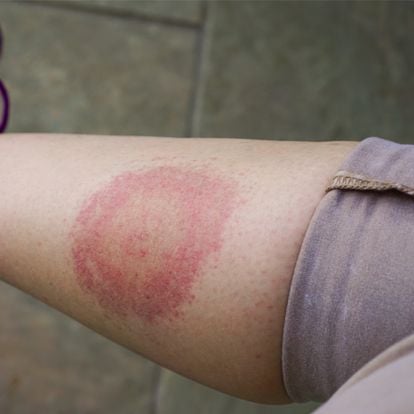 OVERVIEW
OVERVIEW
Lyme Disease is a condition that many people suffer from yearly. According to the Center for Disease Control, approximately 476,000 Americans are estimated to suffer from this infection. Ordinarily, Lyme Disease does not cause any initial pain when contracted, and it is mostly when the infection's early signs show up do patients know that they have an infection. This article will highlight the cause of this disease and treatments for it.
Lyme Disease Causes
Lyme disease is an infection triggered by Borrelia burgdorferi; a bacterium passed from a deer tick bite. The deer tick is formally known as the black-legged tick, and it gets the bacterium (a carrier) from feeding on deer and birds.
A tick bite on the human skin is typically painless, and this is one of the reasons why most people never get to know when they get an infection until early symptoms start to manifest.
Early Symptoms of Lyme Disease
While it is very difficult to determine when a tick bite happens, you could get hindsight of whether you have been infected if you start to show certain signs or have sudden skin reactions. Rash on the skin is the beginning symptom of the condition, and it is vital that you see a dermatologist, especially when the reaction is flat and circular. The early symptoms of Lyme Disease are outlined below.
- Flat circular rash
- Fever
- Fatigue
- Headache
More signs as the Infection Advances in the Body
- Difficulty sleeping
- Aching joints and muscles
- Short-term memory problems or difficulty concentrating
- Speech problems
The Role of a Dermatologist in Treating Lyme Disease
Lyme Disease is not easily noticed as there are no signs of the infection in the first few days. However, when you see sudden and fast increasing rashes on every part of your skin except the palms, then you should meet a dermatologist.
A diagnosis will help the Dermatologist identify the cause of the rashes and identify if it is Lyme Disease or something else. If it is the former, the Dermatologist will administer treatments to curb and eliminate the infection before it gets worse. Therefore, Dermatologists are, more often than not, the first line of health professionals that tackle Lyme Disease.
Also, you mustn't try to apply self-medication without a proper diagnosis from a certified dermatologist. Self-medication may see you treating Lyme Disease when the rash could be a symptom of another condition.
Lyme Disease Treatment
According to the CDC, while Lyme Disease has the potential to develop into uncomfortable complications, it is rarely a critical or fatal infection. The organization also states that the best way to treat the disease is to tackle it in its early stage when the first few signs become apparent.
First Line Medications
Health Experts and Dermatologists recommend combating Lyme Disease in the first 10 -14 days with oral antibiotics to eliminate it. Major medications that work for the disease treatment are:
Doxycycline Cefuroxime and Amoxicillin.
These three medications are often recommended when a dermatologist must have diagnosed the doses quite early. They are considered first-line treatments for all people affected with the condition.
Cefuroxime and Amoxicillin are the most preferred forms of Lyme disease treatment for weaning mothers.
Intravenous (IV) Antibiotics
IV antibiotics are another best way to treat Lyme Disease for people with serious underlying conditions like cancer and cardiac-related symptoms. Also, people who do not treat the disease on time may need IV medications.
Treating Lyme Disease immediately is extremely important, and this is why booking an appointment with a Dermatologist when there is a rash or skin reaction can go a long way. A dermatologist can quickly perform a test on the rash, identify the disease and prescribe first-line medications to quickly end the infection and get you back in good health. Therefore, if you are noticing rash and other Lyme disease-related symptoms as mentioned in this article, you should do well to see a dermatologist.

 OVERVIEW
OVERVIEW
